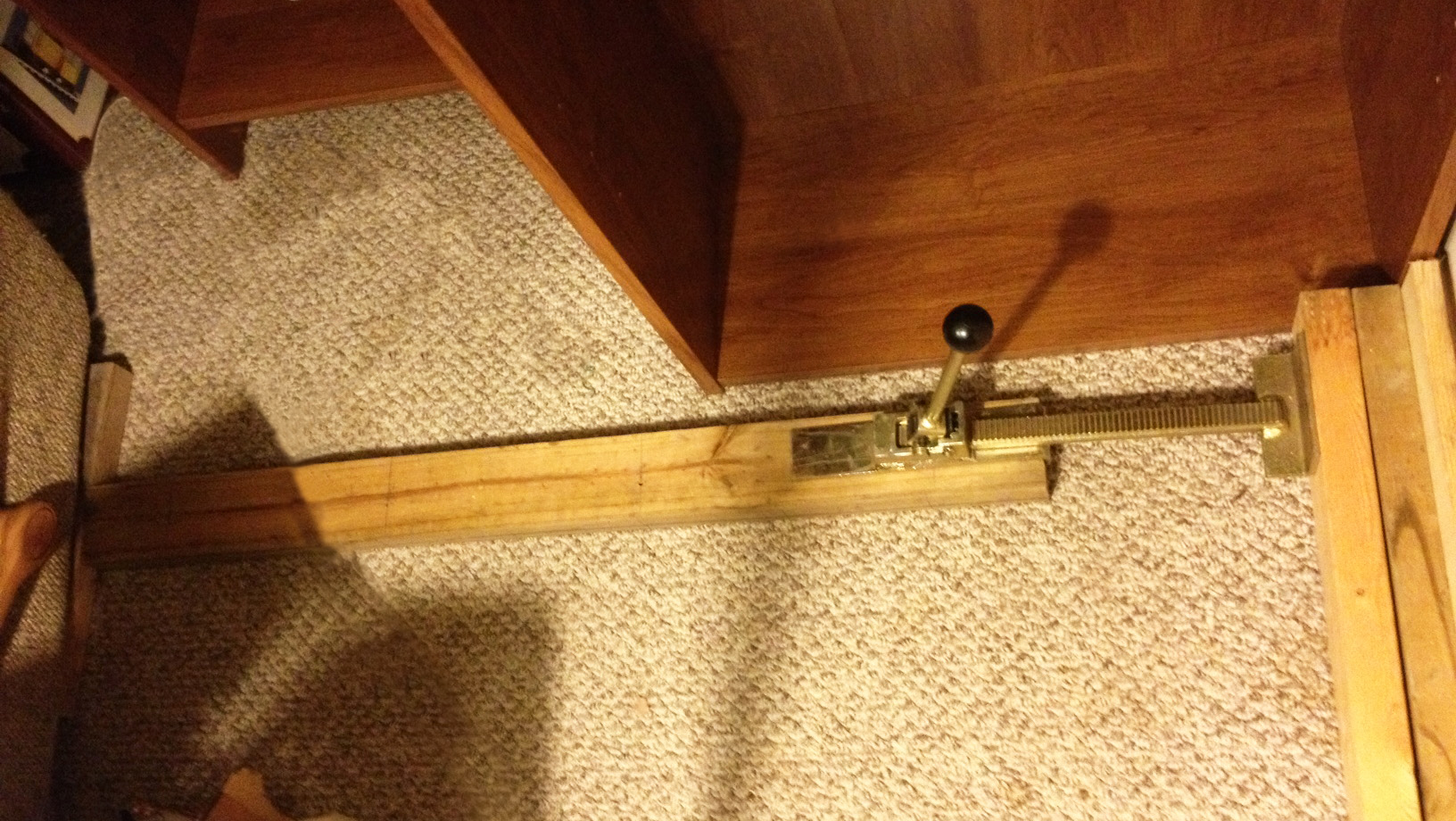Two Tips for the Shop
Heavy Sliding
by Charles Brumbelow
I recently had to make space for some new bookcases in the back corner of my living room; I had to slide two recliner couches farther away from the wall and corner. To aide in moving them, I used a “Flooring Jack,” designed to force floor boards tight against one another prior to nailing, and an assortment of short boards.
 This flooring jack is a Harbor Freight No. 98787 (Photo 1), which is no longer shown on their website. Any device of similar construction will do the job. In fact, a hydraulic bottle jack that can be operated horizontally will work.
This flooring jack is a Harbor Freight No. 98787 (Photo 1), which is no longer shown on their website. Any device of similar construction will do the job. In fact, a hydraulic bottle jack that can be operated horizontally will work.
Though I used the jack to slide furniture, the same technique would work for sliding machine tools. Just keep in mind a few safety considerations: a top-heavy machine like a lathe or mill would not be a good candidate for this trick and stay out of the fall zone of whatever you move. Good luck and be safe!
Measuring Hole Locations
by Carl Blum
I enjoyed Sheldon Jaffe’s method of transferring hole locations described in a previous tip (CLICK HERE to view).
On my last job, one of my tasks was reverse engineering replacement parts. So, in order to not tie up the CMM (coordinate measuring machine) I would use a standard dial caliper to find most locations.
For the center to center distances between holes, I would first measure near edge to near edge using the OD blades on the caliper. Then, I would measure far edge to far edge using the ID blades. I would add both dimensions and take the average (divide by two) and this would be very close to the dimension of the hole centers. Usually I would find it was close to an even dimension, either in inches or millimeters.

